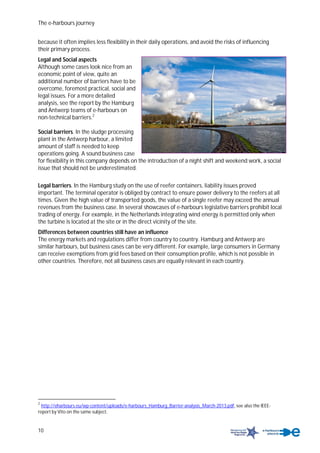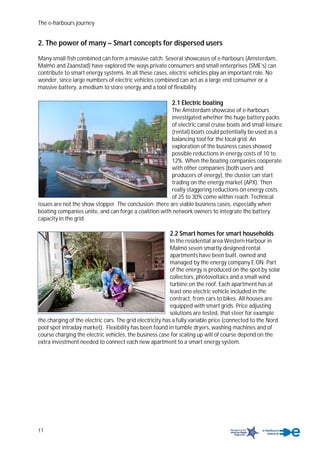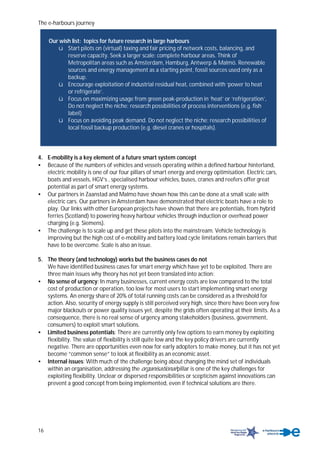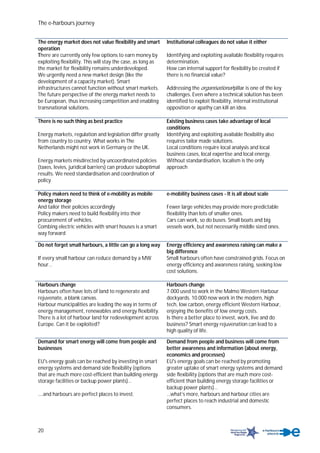The e-harbours project investigated potential sources of flexibility from large industrial energy users in harbours. Case studies in Antwerp and Hamburg identified significant flexibility potential, such as a sludge processing plant that could save 15% on energy costs by shifting loads. Cold stores and a chemical plant also showed flexibility options. New industrial zones like in Malmö and Zaanstad aim to develop smart energy networks from the start that exploit flexibility to integrate renewables and reduce costs. Overall large harbour industries represent a major source of flexibility that could help integrate intermittent renewables if business cases and regulations support it.
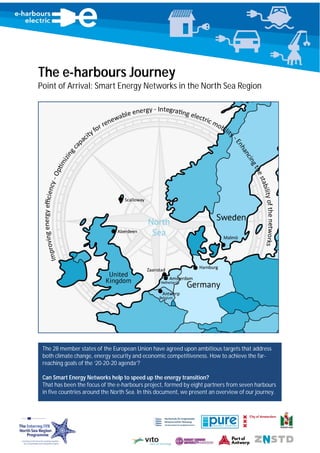


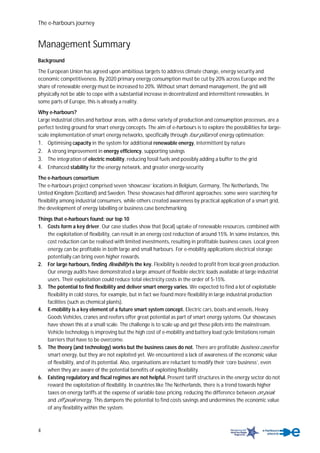


![The e-harbours journey
7
1. Tackling the “big fish”- flexibility of large users
Where do we find the massive amounts of flexibility, which is needed to keep electricity grids stable,
when the input of intermittent renewables is rising? First of all, we searched for large industrial
consumers and producers of energy in our harbour areas, trying to identify sources of flexibility in
their operations.
1.1 Business cases for flexibility
The e-harbours report “Strategies and Business Cases for Smart Energy Networks“ 1
identifies six
different ways to make flexibility profitable. For individual households and small business, normally
the only options available are shifting energy consumption to cheaper off-peak tariff hours or
reduction of the peak power. Large consumers and producers of energy have more options, like
buying electricity on the wholesale market or selling flexibility to parties that are responsible for
keeping the power grid stable.
1.2 Examples from the Antwerp and Hamburg showcases
In both the Antwerp and the Hamburg port area, companies were interviewed in order to investigate
the potential and financial value of the flexibility of the electricity consumption related to their
production process.
Detailed case-studies in the Antwerp and Hamburg harbour areas identified a huge potential for
reduction of energy costs and integration of renewables. We present three smart examples:
1
Available on our website www.eharbours.eu as the WP3.4 report, [EHAR 2013],
Demand side flexibility. Actions voluntarily taken by a consumer to adjust the amount or timing
of his energy consumption. Some installations can shift non-critical activities over time, other
devices can store energy for later use. This demand side flexibility can be employed by grid
operators and balancing responsible parties to maintain the equilibrium in the power grid.](https://image.slidesharecdn.com/2638d9e2-d362-4690-ab34-a5c291ddb3a3-150517234948-lva1-app6891/85/e-harbours-report-Point-of-Arrival-Final-1-7-320.jpg)


